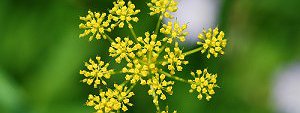If you think of parsnip as a boring root vegetable from the produce section, think again. This pesky plant is taking on a whole new meaning in Durham region.
Until this summer, most people had never heard of wild parsnip or had any idea of the discomfort it could cause. In fact, the plant isn’t even native to Canada. The parsnip plant originated in Europe and Asia, but a wild variety is popping up in our local conservation areas and along city sidewalks. Environmental experts in the Durham region are saying that this season, the plant is growing rampant in the area. A combination of climate, rain and nearby construction has caused an increase in the spread of seeds.
According to a recent story by DurhamRegion.com, several people have been in contact with wild parsnip and learned the hard way about the reaction it can cause. Recently, an 11-year-old boy was cycling through the trails at Greenwood Conservation Area. He fell off his bike and came home with a small scratch on his knee. Within a few days, the back of his leg was enflamed with large red blisters. Based on his symptoms, the doctor concluded that he had mostly likely come into direct contact with a patch of wild parsnip.
Interestingly, it’s not just the contact with the plant that causes the skin to enflame. It’s actually the skins exposure to sunlight after the fact that causes the reaction. Much like any other irritant, not everyone reacts with the same level of severity. If you come into contact with the plant, wash your skin as soon as possible with cool water and a grease-fighting dish soap. Be sure to put your clothes in the wash immediately so they don’t come into contact with anything else.
Just because you don’t notice a reaction right away does not mean you are in the clear. It could take several hours or days before an irritation becomes visible. A cool compress is helpful before the skin starts to blister and Tylenol is recommended to help with the discomfort. Never puncture a blister, as it could lead to infection. If you need help managing your reaction, or you are unsure if you are treating it property, pay a visit to your family doctor or walk-in clinic for some professional advice.
Wild parsnip grows about 20 – 60 inches tall with green stems and broad leaflets. It’s most distinguishing characteristic are the large umbrella shaped flower clusters at the top of the plant. Flowers are yellow or green, and plant is usually in full bloom during the summer time.

